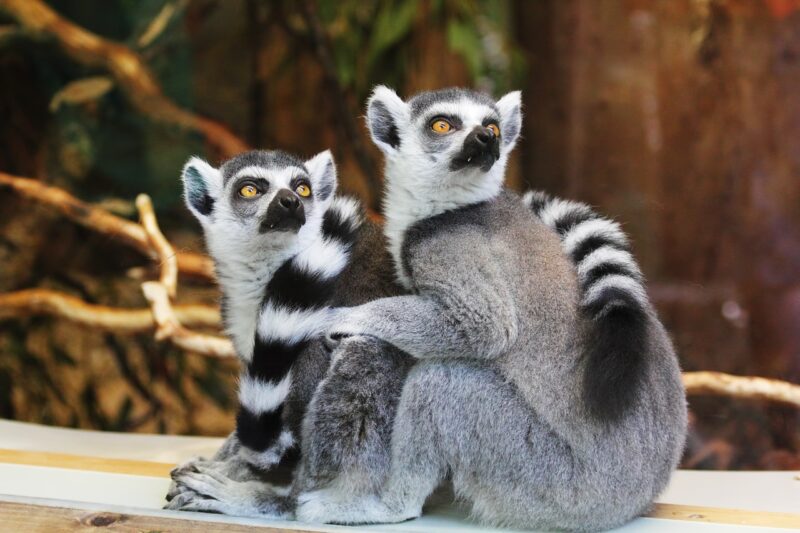The Future of Zoos: How They’re Changing to Better Meet Animal Welfare Standards
November 15, 2024

Zoos have long been a focal point for discussions surrounding animal welfare, conservation, and education. Historically, many viewed zoos primarily as entertainment venues rather than sanctuaries that promote the wellbeing of their animal inhabitants. However, in recent years, there has been a paradigm shift towards making animal welfare a central focus of zoo operations. Environmental changes, increasing public awareness of animal rights, and advancements in animal behavior research have prompted zoos around the world to evolve their practices to meet higher standards of animal welfare.
1. Understanding Animal Welfare in Zoo Settings
Animal welfare is a multidimensional concept that encompasses the physical health, psychological well-being, and overall quality of life of animals in captivity. In recent years, various organizations have developed frameworks to assess and improve animal welfare standards in zoos. The standards include:
- Provision of Enrichment: Enrichment strategies that stimulate animals mentally and physically are crucial for their overall well-being. This may include creative housing designs, access to outdoor spaces, and interactive elements that encourage natural behaviors such as foraging and play.
- Social Structures: Recognizing the social needs of animals is vital. Many species thrive in social groups and exhibit abnormal behaviors when isolated. Zoos are increasingly designing exhibits that allow for appropriate social interactions among animals of the same species.
- Naturalistic Habitats: Modern zoos prioritize creating environments that closely mimic the animals’ natural habitats. From climate-controlled enclosures to flora and fauna that resembles their wild counterparts, the aim is to offer a more authentic living experience for the animals.
These frameworks aim not only to enhance the lives of animals in captivity but also to educate visitors about the importance of natural behaviors and conservation efforts.
2. Innovations in Zoo Design
As zoos adapt to meet modern welfare standards, innovative designs have emerged that prioritize animal welfare without compromising visitor experience. Notable trends include:
- Open Exhibits: Many zoos are now implementing open exhibit designs (often referred to as “immersive habitats”) that allow for greater space and naturalistic settings. The objective is to create an environment where animals can engage in species-specific behaviors, moving freely and expressing natural instincts.
- Vertical Space Utilization: In many cases, the vertical dimension of enclosures is often neglected. Zoos are increasingly utilizing heights by including trees, cliffs, and structures that encourage climbing and exploration, particularly for species like primates that naturally exhibit this behavior in the wild.
- Sustainable Design Practices: Eco-friendly building materials and architectural practices are becoming staples in zoo design. The aim is to minimize environmental impact and promote sustainability, often incorporating renewable energy sources and maintaining biodiversity in the zoo’s landscape.
These innovations reflect a commitment to enhancing the well-being of animals while engaging visitors in a more meaningful and educational experience.
3. Educational Program Enhancements
With changing public perceptions regarding animal welfare, zoos are also reforming their educational programs to align with modern standards. Focus areas include:
- Behind-the-Scenes Tours: By offering behind-the-scenes access to animal care and rehabilitation practices, zoos can help visitors appreciate the complexities of animal welfare and care, fostering respect for these creatures and their natural habitats.
- Interactive Learning Experiences: Hands-on demonstrations and guided encounters with knowledgeable staff provide visitors with direct access to learning about animal behaviors, conservation efforts, and the ecology of species. This interactive approach makes education engaging, stimulating a connection with nature.
- Focus on Conservation Science: With an increased emphasis on conservation, many zoos partner with wildlife reserves and field research organizations to share evidence-based strategies dedicated to preserving endangered species and habitats. Educational programs often highlight success stories of rehabilitation and rewilding initiatives.
These programs foster a community of animal advocates, challenging visitors to become involved in conservation efforts beyond the zoo walls.
4. Community Involvement and Conservation Efforts
A modern approach to zoos has heavily involved the community, necessitating collaboration between zoological institutions and local stakeholders. Some notable efforts include:
- Regional Conservation Programs: Zoos are forging partnerships with local organizations to organize conservation programs targeted at protecting native wildlife and habitats, using their expertise and resources to facilitate change in communities
- Citizen Science Initiatives: Engaging the public in science projects enables individuals to contribute to real-time data collection and analysis for conservation efforts. These initiatives can empower urban communities to participate actively in preservation efforts in their regions.
- Advocacy and Awareness Campaigns: Zoos advocate for animal rights and conservation policies on a broader scale, mobilizing their resources to address pressing environmental issues and influencing legislation to protect endangered species and their ecosystems.
Through these initiatives, zoos are redefining their role in society, moving from institutions focused solely on entertainment to essential players in the global dialogue on conservation and animal welfare.
5. The Role of Technology in Animal Care
Technological advancements are playing a pivotal role in enhancing zoo operations and animal welfare practices. Examples include:
- Monitoring Systems: Use of non-invasive cameras and tracking devices enable zookeepers to monitor animal behavior and health remotely, allowing for timely interventions when necessary. This data can also enrich animal management practices based on observed behaviors.
- Virtual Reality and Augmented Reality Experiences: By integrating virtual experiences within the zoo, visitors can gain a deeper understanding of animal behaviors, habitats, and conservation challenges without disrupting the animals themselves.
- Data-Driven Decision Making: Utilizing data analytics, zoos can track animal health and behaviors, improving breeding programs, habitat enrichment strategies, and conservation initiatives.
The implementation of these technologies creates a more efficient and focused approach to animal care while engaging visitors through innovative educational experiences.
Conclusion
As society’s perceptions of animal welfare continue to evolve, so too does the mission of zoos worldwide. While the focus may have shifted from mere entertainment to providing exemplary animal care, the future of zoos holds the promise of fostering a greater understanding of wildlife conservation and animal rights. By incorporating advanced design strategies, enriching educational experiences, and embracing community involvement and technological advancements, zoos can become effective allies in global conservation efforts. For many, visits to the zoo may evolve from passive experiences to active participation in the dialogue surrounding animal welfare, leading to a more compassionate relationship between humans and wildlife.








